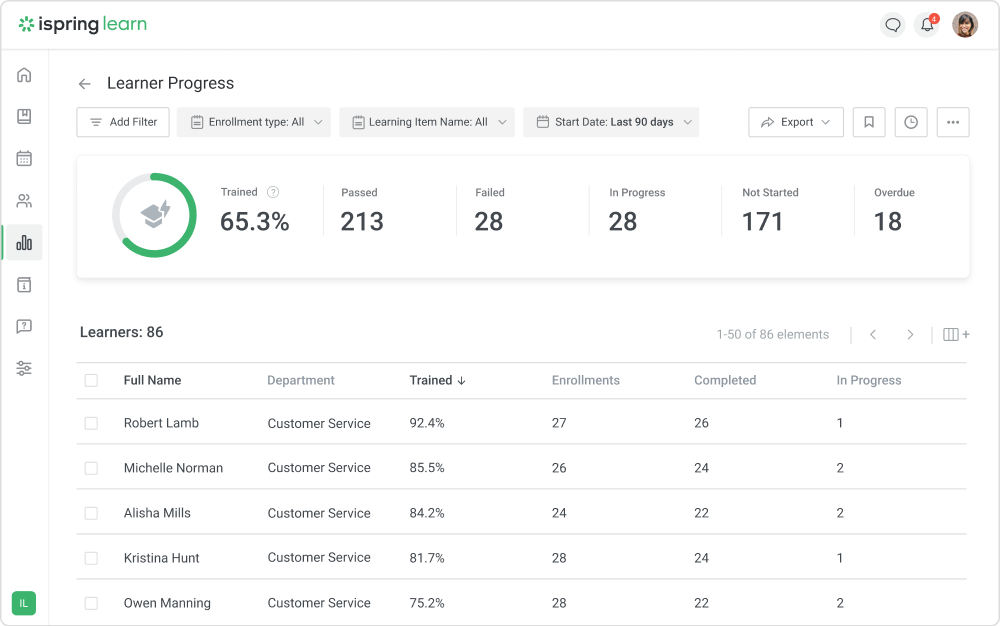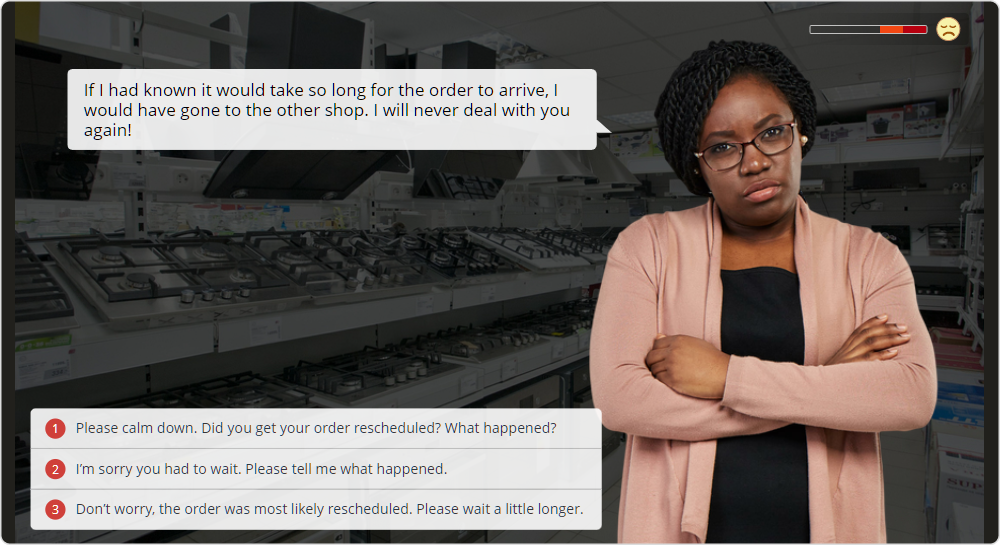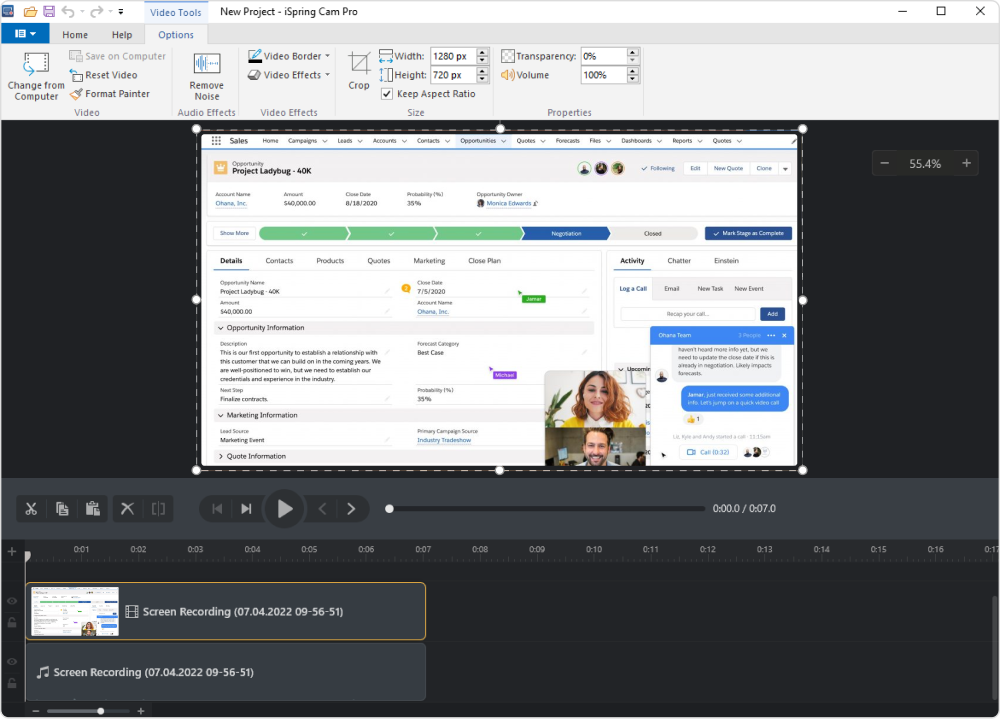5 Tips for Training Call Center Agents
People formulate an image of your brand based on your customer service. That’s why it’s vital to have professional call center agents who can represent your company, products, and values appropriately. Customer service training can help with this. However,...

People formulate an image of your brand based on your customer service. That’s why it’s vital to have professional call center agents who can represent your company, products, and values appropriately. Customer service training can help with this. However, there are some challenges you can face: low trainee engagement, inability to track their progress, low effectiveness, etc.
In this article, you’ll learn five tips to help you overcome these challenges and make your customer service training productive, insightful, and engaging.
1. Train Online
Moving training online is one of the easiest ways to make customer service training convenient and effective. In-person training takes a lot of time: you have to gather call center agents together (some of them always come late), set up the equipment to show a presentation or a video (there’s almost always some equipment that won’t work), explain the topic while employees get distracted by work tasks, and so on. As well, the turnover rate at call centers is usually high, meaning you have to repeat the same training programs over and over for new hires.
Moreover, if you invite trainers from other cities or countries, or send some of your specialists to train agents in other departments, this training approach is expensive. And what do you get in return? The results of such training sessions are almost untrackable. You never know your call center agents’ strengths and weaknesses, and therefore can’t address them with training programs.
Online customer service training is much more insightful, accessible, and time saving. You just need to upload your training materials to your learning management system and assign trainees. They can take programs anytime, anywhere: between customer calls, on their way home, etc. And you can see their progress in real time. An LMS, like iSpring Learn, provides you with detailed reports on a particular agent, team, or the entire department allowing you to see both individual and collective achievements and points of growth.

2. Use Customer Feedback for Customer Service Training
As obvious as it may seem, it’s still worth mentioning that customer feedback is the primary foundation of customer service employee training. It presents a clear picture of your current communication issues with your clients. You should analyze it and assign training programs accordingly.
For example, if many of your customers say that conversations with agents take too long, you should first figure out what causes the issue. Agents might be having difficulty working with the software. There can be poor communication between departments, leading to a longer time to resolve some issues. Or call center agents simply don’t have explicit instruction on the average handling time, so they don’t even think that a call takes longer than needed. You can solve any issues connected with employees’ skills and knowledge with corporate training. Just identify the training needs based on customer feedback and develop the training programs that are needed.
Besides, you can build cases from customer responses, create role-plays, and play them out during training sessions. This leads us to the next tip.
3. Use Call Center Games
Games are great. Don’t believe anything different. They are one of the oldest teaching methods for increasing trainee engagement rapidly. And only when trainees are engaged can we seriously speak of any effectiveness from training. Fortunately, customer service training receives a powerful arsenal of call center games and game-like activities that you can choose from and use to upskill employees.
Let’s take a look at one such game – role-play. There’s probably no safer way to train communication skills than to practice with mock-ups of real-life scenarios in a risk-free environment. You can take actual cases from your customer service experience and turn them into role-plays that new hires will take to gain new knowledge and skills without negatively impacting your brand.
There are two ways to conduct a role-play:
Traditional role-play
Traditional role-play takes place face to face. You need to assign roles to agents based on the scenario that you’ll practice, explain the rules, and let them play it out. After the session, you can discuss the pros and cons of the approach used by the agent and offer some other options if needed.
Online interactive role-play
An interactive role-play works in a similar manner, but you don’t need to gather your team and distract them from their work. Everything happens online, and only one person is involved. Here’s how it works: a trainee sees a customer’s character, who is calling to solve their issue. The trainee has various reply options, and the training program progresses based on their choice. A role-play can look like this:

The result is either negative (when a customer’s issue isn’t resolved) or positive (when an agent manages to handle the customer’s issue). You can add other results, too. For example, an agent can solve the issue in a way that will negatively impact the brand. Your feedback will help agents realize their mistakes and reinforce correct actions.
Most authoring tools that let you create role-plays require coding skills, but there are some easy-to-use tools like iSpring Suite that even those with no experience or technical skills can use without any trouble. By the way, iSpring Learn comes bundled with iSpring Suite, thus providing you with an all-in-one solution for creating interactive online training content, delivering it to trainees, and tracking their progress.
4. Train Agents to use Customer Service Software
Call center agents’ duties aren’t limited to dealing with customers correctly. In other words, there’s more to it than that. They also need to be able to access and update customer data, handle contacts, manage prioritized callbacks, etc. They need to perform multiple tasks with contact center software tools. And to do this successfully, they first need to learn how to work with them. So, you might want to add software-related modules to your training to help agents work with the tools.
Depending on your audience, needs, and the complexity of the software, you can create either text- or video-based training materials. Create articles with images in your LMS to guide trainees step by step on how to use simple software. For more complex cases, you might want to record a screencast with highlighted buttons, system sounds, and other special effects that make the training process more comprehensive.

5. Connect Training to Real Life
One of the main reasons employees aren’t engaged in training is that they don’t see how the new knowledge is relevant to their daily tasks. It’s much like when children don’t like math because they don’t see how all those equations and integrals will be of use in their life.
Try to make it clear to trainees precisely what they will gain by completing the course and how it will enhance their performance. For example, suppose you give a lecture on human behavior to call center agents. In that case, you might highlight that this new knowledge will help them understand customers better, what makes them angry and what pleases them, how to deal with their emotions, etc. This, in turn, will help agents resolve more issues and advance in their careers.
To Wrap Up
Call center agents can enjoy and look forward to customer service training if they understand how it benefits them and if their training experiences are engaging. You can achieve this by moving your training online and using the right online training tools – an LMS and an authoring tool. If you don’t have one yet, check out the list of the best learning management systems.

 Konoly
Konoly 
































